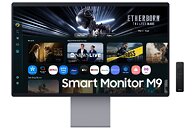
Samsung 6th-Gen DRAM Receives Production Readiness Approval
Samsung Electronics achieved a significant technological milestone by securing production readiness approval for its sixth-generation DRAM technology. Industry sources, as Korea Herald reports, confirmed on Tuesday that the company received internal authorization for mass production, marking completion of the advanced 10 nm-class process (called 1c DRAM) development. We recently reported that Samsung was able to achieve yield rates of 50-70% in testing for the 1c DRAM process as the company seems to be able to follow its projected timeline of approximately two years between product generations. The development holds particular significance for Samsung's high bandwidth memory (HBM) strategy since the company plans to commence HBM4 mass production during the second half of this year utilizing the newly developed sixth-generation DRAM technology. Samsung Electronics announced on May its adoption of hybrid bonding technology for future HBM4 memory stacks. The implementation aims to decrease thermal resistance while enabling ultra-wide memory interfaces, addressing the increasing bandwidth and efficiency requirements of artificial intelligence and high-performance computing applications.
SK hynix, currently dominating the HBM market pursues HBM4 development using fifth-generation DRAM technology and started to deliver HBM4 samples to major clients in March, targeting similar production timelines for the latter half of this year. However, Samsung faces critical qualification requirements ahead as the company must deliver HBM4 samples and successfully complete NVIDIA's qualification testing to secure high-volume supply contracts. Additionally, Samsung continues awaiting qualification approval for its 12-layer HBM3E product while supplying AMD and looking for supply agreements with NVIDIA.
SK hynix, currently dominating the HBM market pursues HBM4 development using fifth-generation DRAM technology and started to deliver HBM4 samples to major clients in March, targeting similar production timelines for the latter half of this year. However, Samsung faces critical qualification requirements ahead as the company must deliver HBM4 samples and successfully complete NVIDIA's qualification testing to secure high-volume supply contracts. Additionally, Samsung continues awaiting qualification approval for its 12-layer HBM3E product while supplying AMD and looking for supply agreements with NVIDIA.
























































